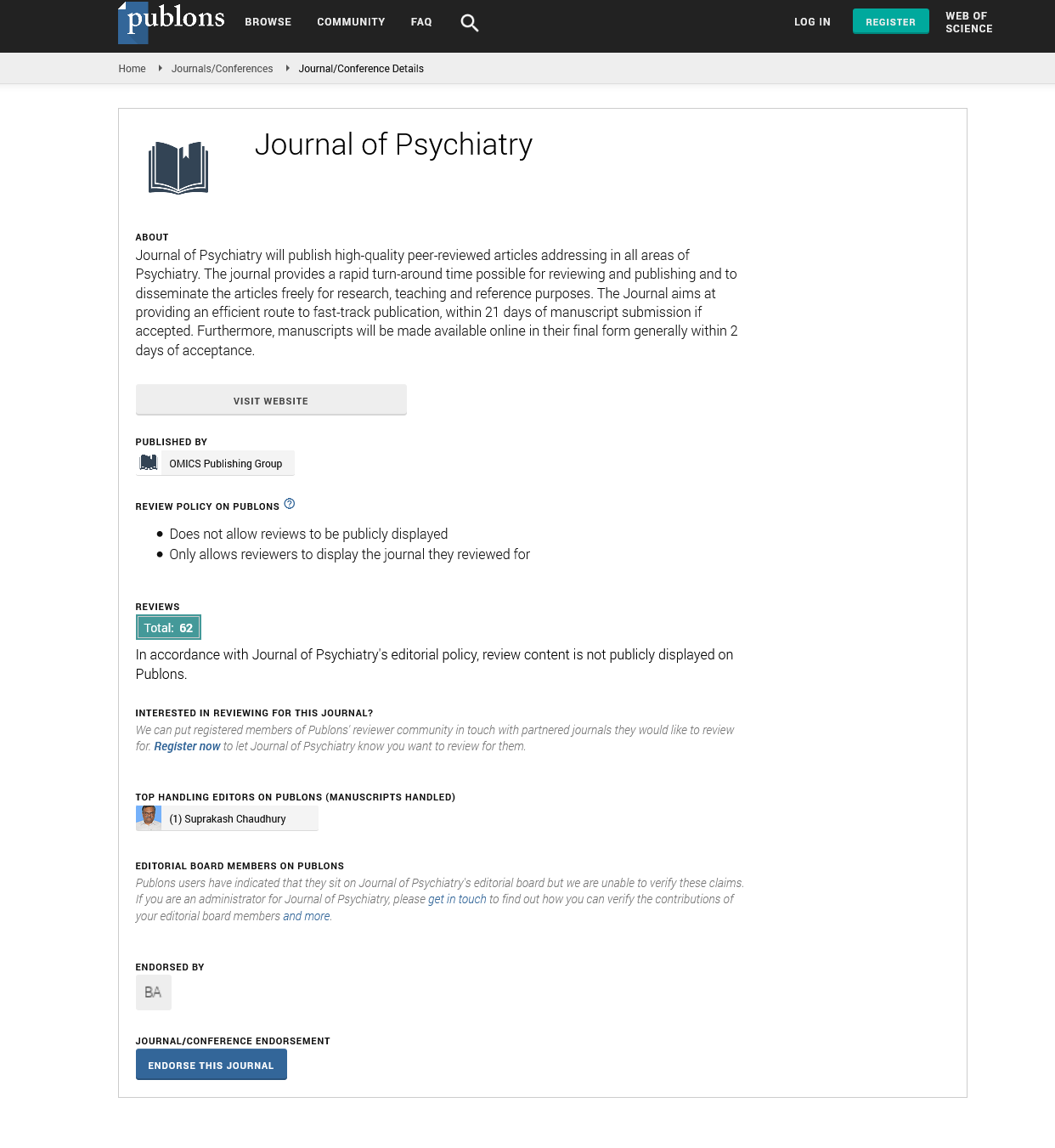Indexed In
- RefSeek
- Hamdard University
- EBSCO A-Z
- OCLC- WorldCat
- SWB online catalog
- Publons
- International committee of medical journals editors (ICMJE)
- Geneva Foundation for Medical Education and Research
Useful Links
Share This Page
Open Access Journals
- Agri and Aquaculture
- Biochemistry
- Bioinformatics & Systems Biology
- Business & Management
- Chemistry
- Clinical Sciences
- Engineering
- Food & Nutrition
- General Science
- Genetics & Molecular Biology
- Immunology & Microbiology
- Medical Sciences
- Neuroscience & Psychology
- Nursing & Health Care
- Pharmaceutical Sciences
Autism Spectrum and Sleep Disorders
Euro Global Summit and Medicare Expo on Psychiatry
July 20-22, 2015 Barcelona, Spain
Riccardo Alessandrelli, Flavia Caretto and Francesca Defidio
Posters-Accepted Abstracts: J Psychiatry
Abstract:
Sleep problems are frequently found in patients diagnosed in the Autism Spectrum. These symptoms may be secondary to the ?core? symptoms of autism, or caused by related psychiatric comorbidity. A specific diagnostic classification is therefore necessary for the reconstruction of the dynamics underlying insomnia, in order to set the most effective treatment. Classification of Insomnia: Insomnia can be classified as initial, median or terminal insomnia, respectively characterized by difficulty falling asleep, stay asleep during the night and early-morning awakening with inability to return to sleep. Insomnia can also be classified on the basis of the duration of the disorder, in transient or occasional (lasting a few days), short-term or acute (lasting a few weeks) and chronic (lasting from weeks to years) insomnia. The transient insomnia is typically related to acute stress situations, linked to environmental circumstances, then ending with the event. Other situation associated with transient insomnia, are typically represented by jet lag, shift work, stationing at high altitudes. The short-term insomnia, is frequently related with stressful events of severity and duration greater than the previous. Chronic insomnia can be associated with alteration of circadian rhythm or a medical and psychiatric disorder determining a state of chronic hyperarousal. These two broad categories, can also be superimposed. With reference to the causes insomnia can be told Primary insomnia in the absence of other etiological explanations and due to individual predisposition and stressful events. In this condition, were detected alterations characterized by concomitant increase in body temperature, heart rate and sometimes metabolic values. We are in presence of Secondary insomnia, instead, when the causes are due to a medical or psychiatric disorder, acute pain, drug abuse or to environmental conditions like bright light, loudy noise and so on.

